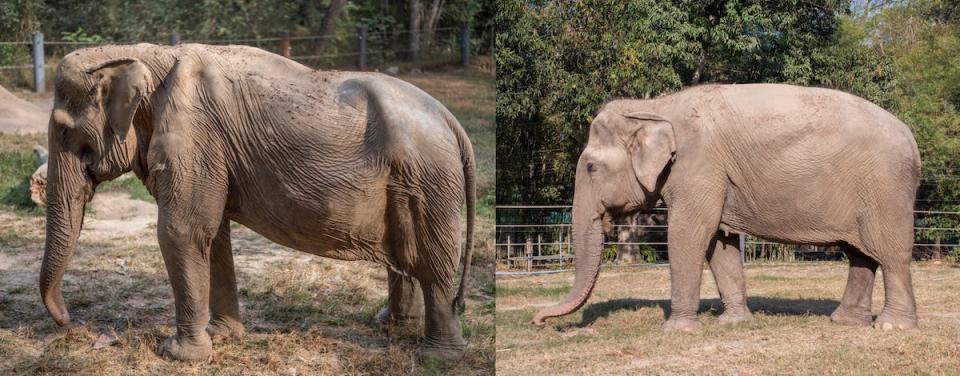A disturbing image of an elephant with a deformed spine shows the brutal toll that tourist rides can have

Pictures of rescued elephants show the toll of the tourist trade on the hard-working animals.
Years of hard labor can deform their spines out of shape, causing pain.
Unlike horses, elephants were not bred to be ridden and tourist treks can cause irreversible damage.
A picture of an elephant rescued after decades of hard labor shows the terrible toll tourist rides can take on the creatures.
Elephants who carry tourists on treks in South Asian countries often end up with unnatural kinks in their backs. The rides can deform their spines from a normal dome-shaped appearance, according to the Wildlife Friends Foundation Thailand (WFFT).

Pai Lin, the elephant shown on the left, was rescued after more than 25 years in the trekking industry. Now 71, she lives at the WFFT's sanctuary, where she can roam free.
Boon Chuey, shown below, is another elephant whose spine was deformed by the tourist trade, per the WFFT.

Elephants can spend decades of their long lives carrying tourists on a "howdah," a cast iron seat that is strapped to their backs with ropes. and blankets.
The weight of the seat and passengers can irreversibly cave in and sink the animal's backs. Both Pai Lin and Boon Chuey still carry scars from the pressure points of the seats on their backs, per the WFFT.

"Pai Lin arrived at our sanctuary in 2006 after working in the Thai tourism industry," Edwin Wiek, director and founder of the WFFT, told CNN.
She could be forced to carry up to six tourists at a time, per CNN.
"She was given up by her previous owner who felt that she was too slow and always in pain and couldn't work well anymore," he said.

"It's important to understand that elephants, unlike horses, are not bred to be ridden. They are not domesticated animals and are taken from the wild and kept in awful conditions," said Wiek.
Read the original article on Business Insider

 money
money 